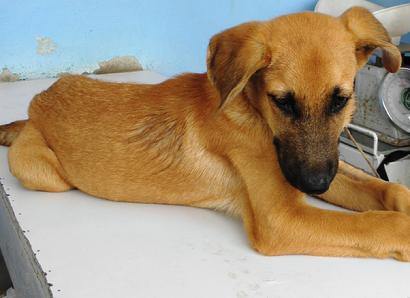The Canine Infectious Respiratory Disease (CIRD) Complex, commonly known as “Kennel Cough”, which includes a number of infections such as those caused by Bordetella bronchiseptica, Canine Adenovirus-2, Canine Parainfluenza virus, Canine Distemper Virus, had a new viral disease added in 2005. In the United States, the Equine Influenza virus A-H3N8 made the species jump into dogs– greyhounds in Florida at first in 2004, then to others in other states – becoming Canine Influenza Virus (CIV A-H3N8)2.
Canine Influenza is completely distinct from Canine Parainfluenza which is caused by a different virus, though they have similar effects. It is highly contagious, can affect dogs of all ages and is transmitted by direct contact, aerosol or via contaminated objects – including human hands. Of exposed dogs, 80-90% will develop clinical infection and up to 20% of these develop severe disease, including possible pneumonia from secondary bacterial infection. The disease, like its equine counterpart, is not known to be transmissible to humans3.
Clinical signs include fever, a productive cough, mucoid to mucopurulent nasal discharge, with more severe cases showing lack of appetite, and, if pneumonia develops, more severe respiratory signs such as dyspnea (difficulty breathing). The clinical course may run from 10 to 30 days. Mortality is low ( 1 – 8%) and is of greatest risk in dogs developing complications1,2.
Definitive diagnosis may be achieved via several laboratory methods including serology, virus isolation and polymerase chain reaction (PCR)1. Each has its limitations.
Treatment is generally supportive. Antibiotics may be used to control secondary bacterial infections that may cause pneumonia, but will not affect the viral infection. Oseltamivir (Tamiflu®)may be used in shortening the course of the disease if started early, but this is generally not useful as by the time the disease is distinguished from other CIRD causes – if it is at all – it is too late to make a difference. Other supportive measures might include non-steroidal anti-inflammatories for fever, expectorants to facilitate clearance of mucus from the lower respiratory tract (cough suppressants are contra-indicated), and, if needed, intravenous fluid therapy1,2.
Prevention may be achieved by vaccination1,2,3 (Novibac® Canine Flu H3N8 – Merck Animal Health), but owners of affected dogs are advised to keep them from mixing with others. General hygienic measures such as hand washing after handling dogs, before handling others may be helpful1,2,3.
Canine Influenza has not yet been diagnosed in Jamaica and should not arrive here easily unless an infected dog is illegally imported.
|
 |
| Canine Influenza A-H3N8 is NOT known to occur in Jamaica |
|
|